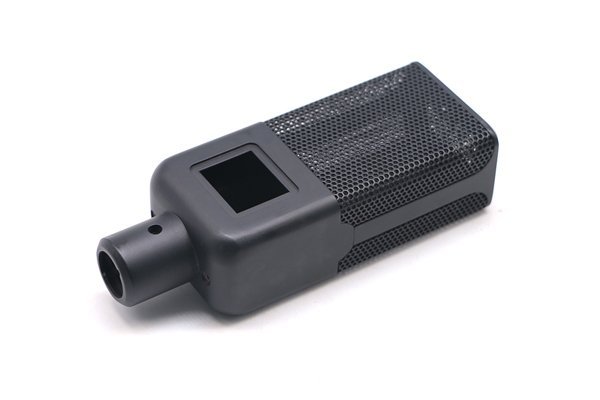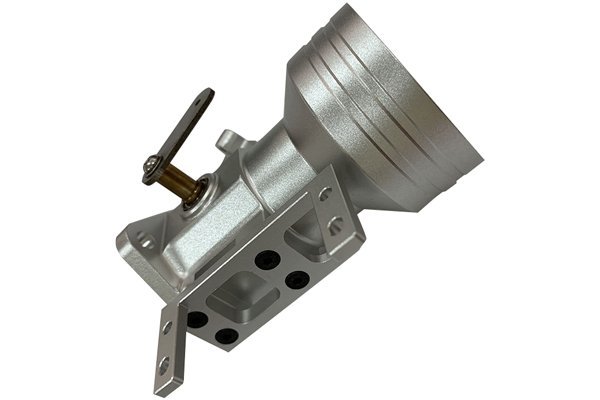: Did You Know?
Did you know that aluminum has become the preferred material for a significant number of automotive manufacturers? Over the past two decades, the automotive industry has increasingly integrated aluminum into vehicle designs, leading to a staggering reduction in weight and an enhancement in fuel efficiency. In fact, according to the Aluminum Association, lightweighting vehicles with aluminum can improve fuel economy by 30% to 50%. As vehicles become more sophisticated, the demand for precise, high-quality components rises, and here’s where CNC (Computer Numerical Control) machining steps in, especially for creating automotive aluminum parts.
Understanding CNC Machining
CNC machining is a manufacturing process that utilizes computer-controlled machines to produce detailed and complex parts with a high degree of accuracy. Unlike traditional machining, where operators control each movement, CNC machining automates the process, providing exceptional precision and repeatability. The advent of this technology has revolutionized various industries, including automotive, by offering solutions that cater to the need for precision, quality, and efficiency.
Why Aluminum?
Aluminum is an excellent choice for automotive manufacturing for several reasons:
The Role of CNC Machining in Automotive Aluminum Production
CNC machining plays a vital role in the production of automotive aluminum parts. Let’s delve deeper into how CNC technology enhances the manufacturing process in this sector.
One of the most significant advantages of CNC machining is its ability to create highly precise components. In the automotive industry, even the slightest deviation can lead to performance issues. CNC machines are programmed with advanced software that ensures that every cut, drill, and shape is executed with extreme accuracy. This eliminates human error and allows for the consistent production of parts that meet exact specifications every time.
Example: An automotive manufacturer producing engine components would utilize CNC machining to ensure that the dimensions correlate precisely with the design specifications, thus improving the fit and function within the engine block.
The automotive industry operates on tight deadlines and high production volumes. CNC machining significantly reduces production time, allowing manufacturers to meet market demands quickly. With the automation of the machining process, multiple parts can be produced simultaneously, thus increasing throughput without sacrificing quality.
Example: By using CNC machining, a manufacturer can produce thousands of aluminum parts in a shorter time frame compared to manual machining techniques. This efficiency contributes to lower labor costs and faster delivery times.
Efficiency in manufacturing goes beyond speed; it also means using materials judiciously. CNC machining allows for precise cuts that minimize waste—a crucial aspect when dealing with high-cost materials like aluminum. With the capability of nesting multiple parts on a single sheet or block of aluminum, manufacturers can optimize resource usage to ensure that as little material as possible goes to waste.
Example: A manufacturer could use CNC machining to cut several aluminum brackets out of a single sheet while reducing scrap material, which directly impacts the cost of production.
CNC technology excels in producing complex geometric shapes and intricate designs that are often required in automotive parts. If the design changes, which is common as manufacturers aim to improve efficiency or adapt to new technologies, CNC systems can quickly be reprogrammed to accommodate these shifts.
Example: As electric vehicles gain popularity, manufacturers may need to adjust their production lines. CNC machines can be rapidly adapted to create new components specifically designed for electric vehicles, such as lightweight casings for batteries.
Applications of CNC Machining in Automotive Aluminum Parts
CNC machining is used to create a variety of automotive aluminum components, including:

Challenges in CNC Machining for Automotive Aluminum Parts
While CNC machining offers many benefits, it is not without its challenges. Understanding these challenges can enable manufacturers to implement effective solutions.
Aluminum is relatively soft compared to other metals, which means that cutting tools can experience wear over time. Regular maintenance and tool replacement schedules are essential to ensure that production quality remains consistent.
Solution: Use of high-speed steel (HSS) cutting tools or carbide inserts designed for aluminum can help reduce wear and prolong tool life.
Aluminum is susceptible to thermal expansion, which can alter dimensions during machining. If not accounted for, this can lead to inaccuracies.
Solution: Implementing a cooling system during machining can help maintain consistent temperatures and minimize expansion.
When machining aluminum, chips can build up quickly. This not only can hinder the machining process but also can lead to surface finish issues.
Solution: Utilizing effective chip removal systems and regular cleaning can mitigate this issue.
Cutting-Edge Technologies Enhancing CNC Machining
As technology evolves, so too does CNC machining. Emerging technologies are making the machining of automotive aluminum parts even more efficient and precise.
The integration of CAD (Computer-Aided Design) and CAM (Computer-Aided Manufacturing) software with CNC machines allows for seamless design-to-production workflows. This software can simulate the machining process, identifying potential issues before the actual manufacturing begins.
The Internet of Things (IoT) and Industry 4.0 are enabling smarter CNC systems. Machines can now communicate with each other and with centralized control systems to provide real-time data on production efficiency, tool wear, and quality control, allowing for more proactive adjustments.
Automation in CNC machining is growing. Collaborative robots (cobots) can assist in loading and unloading parts, ensuring a continuous flow in the production process while allowing human operators to focus on more complex tasks.
Best Practices for Implementing CNC Machining
To fully leverage the advantages of CNC machining for automotive aluminum parts, manufacturers should consider the following best practices:
: The Future of CNC Machining in the Automotive Industry
The use of CNC machining for producing automotive aluminum parts presents vast advantages, from enhanced precision and efficiency to reduced material waste and design flexibility. As the automotive industry continues to evolve, driven by demands for lightweight vehicles and sustainable practices, CNC machining will play an integral role in meeting these challenges.
In summary, adopting CNC machining technology is not just a trend; it’s a necessity for automotive manufacturers looking to stay competitive. By embracing best practices, leveraging emerging technologies, and constantly innovating, manufacturers can ensure they are at the forefront of this evolution.
Ultimately, the significance of this blog lies in its ability to shed light on the essential role of CNC machining in modern manufacturing—a topic that deserves careful consideration as industries navigate the ever-changing landscape of automotive production. Adopting cutting-edge technologies is integral in maintaining quality, improving efficiency, and meeting sustainability goals in our increasingly competitive market.






